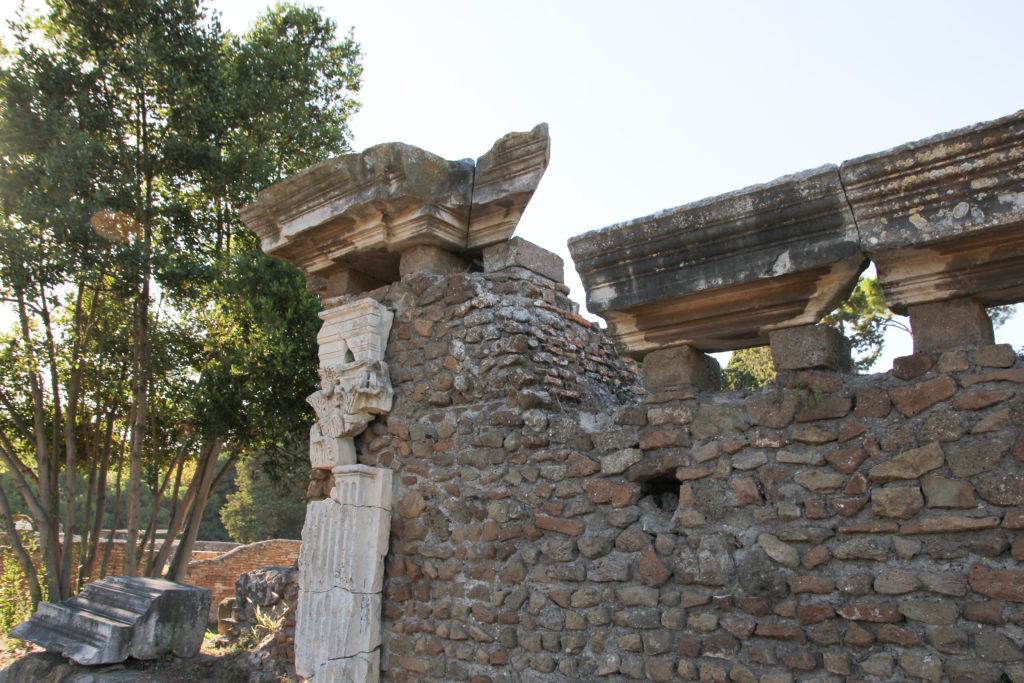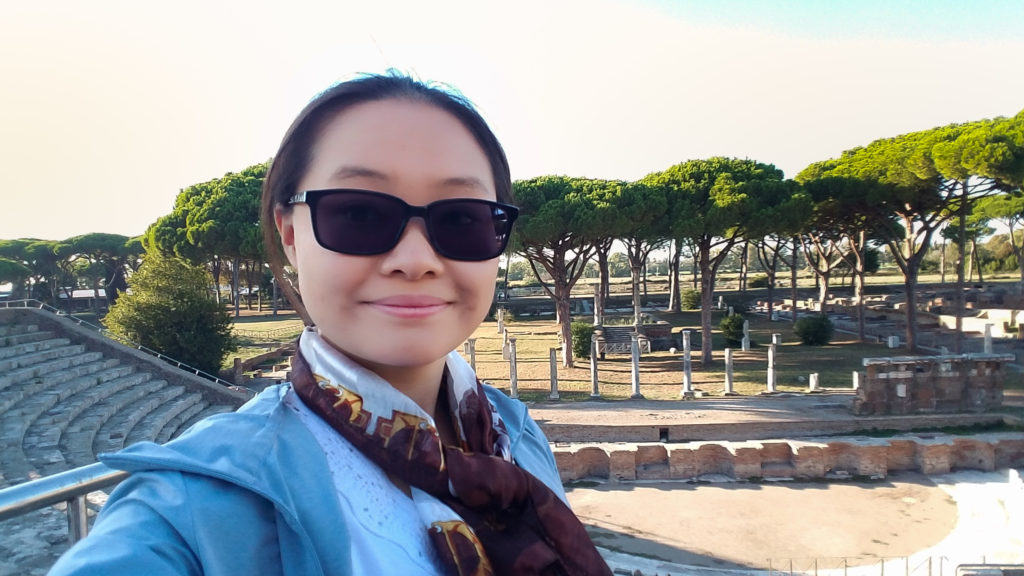Friday: the end of the week, a time to wind down. I had just finished my third week of classes at Temple Rome and was thinking about what I wanted to do. I finished taking care of business on campus and just got back to the residence in the afternoon when I got an idea: I was going to see Ostia!
At orientation, I heard that Ostia was a common destination for Romans who wanted to go to the beach. It is easily accessible via Roma Metro. I would need to transfer subway lines a few times to get there from the residence, but it was affordable with the unlimited rides on my monthly pass. My Metro card is really paying off.
I brought my camera with me as I made my way onto the Linea A, and then the Linea B to take a new train: the Roma-Lido line. I did some research on transportation in Rome, and it turns out that the concept of this particular urban railway was a pressing issue since the 19th century, because people wanted a way to connect the center of the city to the shore. Projects to construct the line went on and off for over a century until eventually, the modern Roma-Lido line became what it is.
The stop I got off at was called Ostia Antica: Ancient Ostia. And for good reason: it was close to the Parco Archaeologico di Ostia Antica! I ran across the bridge outside the train station to the entrance of the archaeological park: I realized that the staff would stop admitting visitors after 5:00, and it was already 4:40 by the time I arrived.
I made it to the ticket office in time and got into the park without a problem. I had about two hours before the park closed, so I made the most out of my short visit. I was stunned by the sudden change between the modern park entrance and the first thing I saw inside: archaeological ruins! The remnants of a place where actual ancient people lived in!

Ostia was a significant place in Roman history. Some historians argue that it was the first “colony” of Rome in its early days from the 8th century B.C.E. Access to the Tiber river delta was crucial for resources in Italy, and eventually, Ostia became a valuable port town of Rome. The ruins are what is left of the houses and public spaces people used, and are what we modern visitors wander around and look at today.
It’s not just 21st-century humans who walk on the ancient stone roads: I had an unexpected encounter with a friendly cat that approached me, meowed, and sat at my feet, purring. I stroked my new feline friend for a while. The way the stray cat walked up to me reminded me of how my cat would greet me every time I returned to my family home in Boston. The meows and purrs sounded like the ones my cat makes, too. I felt like I was missing something in staying in Rome, and this cat seemed to fix that by being so much like my pet at home.


I walked around the park and got curious whenever I saw steps leading to platforms. I thought it would be interesting to record my experience walking up the steps and taking in the view, so I did just that on my phone. I found stunning sights of Ostia from the high vantage point and discovered things I would have missed on ground level. Some of these things include a large mosaic that covers several rooms of what was once a large house and a view of the theatre that I would have missed otherwise.




I kept an eye on the time. I managed to find the exit and head out before the staff was scheduled to do their rounds and ask people to leave before closing time. I’ll definitely come back here some other time and explore the rest of the ancient port-town.
The sun was starting to set, and it dawned on me that seeing the sunset from the west coast of Italy is an opportunity I’ve only seen once. As a Bostonian, it was impossible for me to see the sun set into the ocean: the Atlantic Ocean is on the east coast, not the west. I decided to take the Roma-Lido line further toward the shore.
I explored the more modern part of Ostia and came across a bustling, lively area near the sea. I saw a lot of restaurants and shops. Even this late in September, business is still booming at the beach!

I’m glad I caught the sunset over the Tyrrhean sea that evening. It was beautiful and reminded me of the fun time I had in Santa Marinella a few weeks ago. I was amazed at how a view like this is now so accessible to me from the Metro. It’s not something I can have in Boston!

As the sun sunk into the waves, a wave of hunger sunk into my body. I thought that since I was already so far from the Residence, and there were a lot of popular restaurants in the area, I might as well eat out.
I stopped at a place with a lot of outdoor seating. I felt more comfortable greeting people in Italian (“Buona sera!” means “Good evening!” Formal and appropriate.) and in ordering food. I find myself hesitant less as I learned how to get the waiter’s attention with “Scusi!” (“Excuse me!”) and start my order with “Vorrei” (“I would like…”).
I learned how to conjugate verbs in the present and how to form sentences. My pronunciation is improving, and I didn’t struggle as much with long words with a lot of consonants. I managed to order spaghettoni alla carbonara, a specialty in Rome. I found it funny how most of the ingredients – eggs, bacon, and cheese – sound like something I’d eat for breakfast in the States in an omelette, but in Rome, would be components of a classic pasta dish in the city. I enjoyed my carbonara and salad very much.

I walked back to the train station and made my way back to downtown Rome. I retraced my steps on the Metro and returned to the Residence, tired from all the running I did at the archaeological park and at the shore but satisfied with my photographs and the dinner I managed to order in not-as-shabby Italian. Most of all, I was pleased to learn that an adventure does not have to be a huge undertaking to be meaningful; the little things like riding a new train, seeing just a bit of an ancient port-town, petting a local cat, and trying a regional dish matter just as much, if not more!


